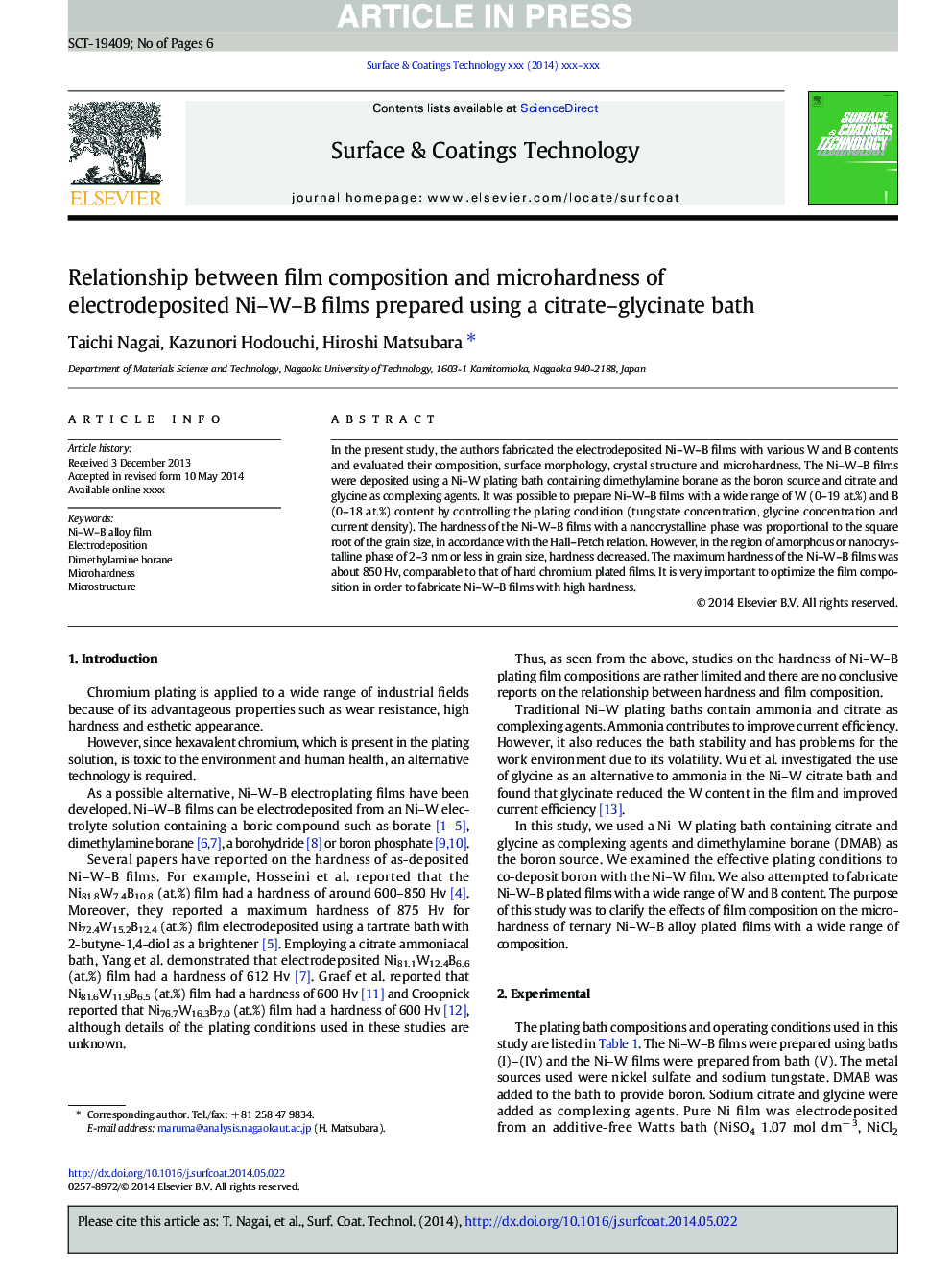| Article ID | Journal | Published Year | Pages | File Type |
|---|---|---|---|---|
| 8027767 | Surface and Coatings Technology | 2014 | 6 Pages |
Abstract
In the present study, the authors fabricated the electrodeposited Ni-W-B films with various W and B contents and evaluated their composition, surface morphology, crystal structure and microhardness. The Ni-W-B films were deposited using a Ni-W plating bath containing dimethylamine borane as the boron source and citrate and glycine as complexing agents. It was possible to prepare Ni-W-B films with a wide range of W (0-19Â at.%) and B (0-18Â at.%) content by controlling the plating condition (tungstate concentration, glycine concentration and current density). The hardness of the Ni-W-B films with a nanocrystalline phase was proportional to the square root of the grain size, in accordance with the Hall-Petch relation. However, in the region of amorphous or nanocrystalline phase of 2-3Â nm or less in grain size, hardness decreased. The maximum hardness of the Ni-W-B films was about 850Â Hv, comparable to that of hard chromium plated films. It is very important to optimize the film composition in order to fabricate Ni-W-B films with high hardness.
Related Topics
Physical Sciences and Engineering
Materials Science
Nanotechnology
Authors
Taichi Nagai, Kazunori Hodouchi, Hiroshi Matsubara,
